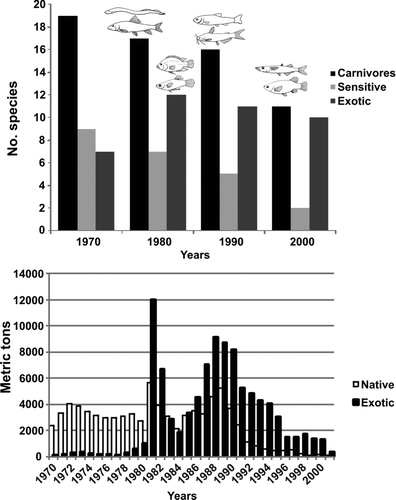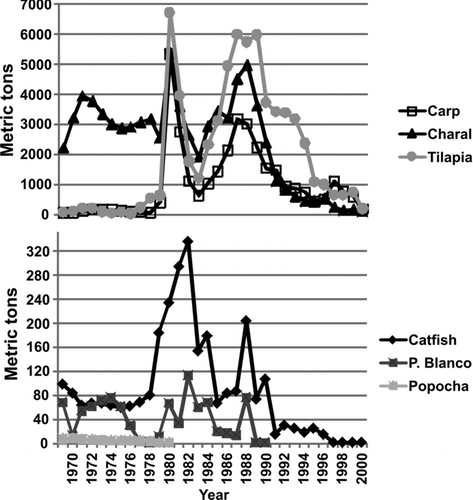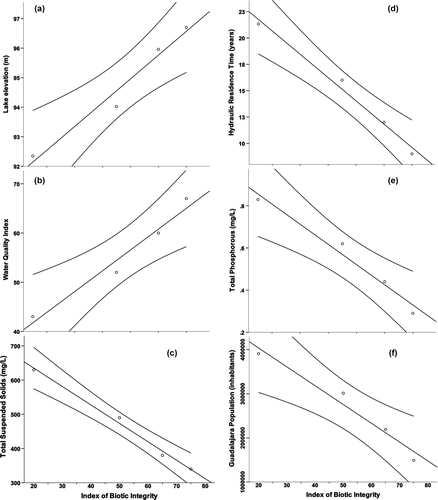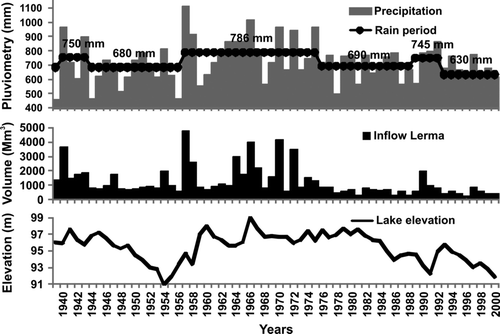Figures & data
Figure 1 Fish species composition and structure change in Lake Chapala. (a) Number of carnivores, sensitive and exotic species at different decades (pictures from Álvarez 1970). (b) Comparison between native and exotic fish landings as reported by government agency fisheries statistics (CONAPESCA, 2001).

Table 1 Metrics and scoring criteria for the Index of Biotic Integrity (IBI; Karr 1981) as modified for Mexican lakes by Lyons et al. (Citation2000). Expected values (EV) for that metric in the absence of major human degradation, given in parentheses after each metric, were derived from Moncayo-Estrada and Buelna-Osben (Citation2001).
Table 2 Scores and values (in parentheses) for the 10 metrics from the Lake Chapala fish community decadal analysis.
Figure 2 Fish species capture data in Lake Chapala as reported by government agency fisheries statistics (CONAPESCA, 2001). Species were divided in 2 graphs because of the difference in the magnitude of capture values.

Table 3 Fish species in Lake Chapala by decade, with origin, feeding and tolerance classifications following Lyons et al. (Citation2000) criteria. Taxonomy follows Mayden et al. (1992), except for Goodeidae, which follows Webb (1998).
Figure 3 Relationship between (a) the IBI values in different decades with Lake Chapala surface elevation, (b) water quality index, (c) total suspended solids, (d) hydraulic residence time, (e) total Phosphorous, and (f) population growth of Guadalajara city. Graphs include the tendency line with 95.0% Mean Prediction Interval.

Figure 4 Annual mean precipitation (including rain period) and annual inflow from the Lerma River in the landcape. Also historical water levels in Lake Chapala.
